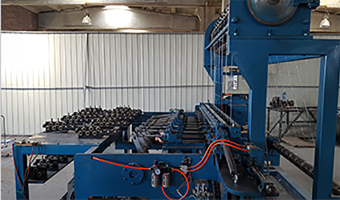Exploring the Aesthetic and Functional Attributes of Grey Reflective Glass
In the contemporary world of architecture and design, materials play a critical role in shaping our experiences and interactions within a space. Among these materials, grey reflective glass stands out for its unique ability to merge aesthetics with functionality. This article delves into the characteristics, benefits, and applications of grey reflective glass, showcasing its significance in modern design.
Aesthetic Appeal
Grey reflective glass, characterized by its stylish metallic sheen and neutral tone, has become a staple in modern architecture. Its reflective quality allows it to blend seamlessly with various environments, creating an elegant and sophisticated look. Whether used for commercial skyscrapers, residential buildings, or interior design elements, this glass adds a layer of depth and dynamism to any architectural project.
The subtle grey hue provides a contemporary palette that can complement a variety of color schemes. Unlike mirror-like finishes that might overwhelm a space with high glare, grey reflective glass strikes a fine balance, reflecting light while maintaining a gentle, subdued appearance. This quality enhances the beauty of surrounding structures and landscapes, making it a preferred choice for architects seeking to create harmonious and visually appealing designs.
Functional Benefits
Beyond its aesthetic appeal, grey reflective glass also boasts several functional benefits. Its reflective surface plays a critical role in energy efficiency. By reflecting solar radiation, it helps to reduce heat absorption, keeping interiors cooler in hot weather. This not only enhances the comfort of the occupants but also contributes to energy savings by lessening the reliance on air conditioning systems.
Moreover, grey reflective glass also improves privacy without sacrificing light. The reflective nature of the glass makes it challenging for outsiders to see in during the day, allowing occupants to enjoy natural light while maintaining their privacy. This dual functionality is especially beneficial in urban settings, where buildings are often in close proximity to one another.
grey reflective glass
Durability and Maintenance
The durability of grey reflective glass is another attractive feature. Designed to withstand the elements, it is often treated to resist scratches, impacts, and other forms of wear and tear. This longevity makes it a cost-effective choice for builders and property owners, as it requires less frequent replacement compared to traditional glass options.
Maintenance of grey reflective glass is relatively straightforward. Regular cleaning ensures that the reflective quality is preserved and that any accumulated dirt or grime does not affect its aesthetic appeal. With proper care, this type of glass can retain its sophisticated look for years, contributing to the longevity of the building.
Applications in Design
Grey reflective glass finds a multitude of applications across various fields of design. In commercial architecture, it is commonly used in office buildings, shopping centers, and hotels, creating striking facades that draw attention while providing functional benefits. The modern skyline is often dotted with structures clad in this versatile material, showcasing its widespread acceptance in urban development.
In interior design, grey reflective glass can be employed in various applications, such as partition walls, decorative elements, and even furniture. Its ability to reflect light makes spaces feel larger and more open, making it an excellent choice for smaller rooms. Additionally, when framed correctly, it can serve as a stunning focal point, adding texture and richness to the overall design scheme.
Conclusion
Grey reflective glass is more than just a building material; it is an embodiment of contemporary design principles that marry beauty and utility. Its aesthetic appeal, functional benefits, durability, and versatility make it a prominent choice in modern architecture and interior design. As our architectural landscape continues to evolve, grey reflective glass will undoubtedly maintain its relevance, offering designers the tools they need to create innovative and inspiring spaces. Whether used in towering skyscrapers or intimate residential settings, grey reflective glass is a testament to the art of blending form with function.
 Afrikaans
Afrikaans  Albanian
Albanian  Amharic
Amharic  Arabic
Arabic  Armenian
Armenian  Azerbaijani
Azerbaijani  Basque
Basque  Belarusian
Belarusian  Bengali
Bengali  Bosnian
Bosnian  Bulgarian
Bulgarian  Catalan
Catalan  Cebuano
Cebuano  Corsican
Corsican  Croatian
Croatian  Czech
Czech  Danish
Danish  Dutch
Dutch  English
English  Esperanto
Esperanto  Estonian
Estonian  Finnish
Finnish  French
French  Frisian
Frisian  Galician
Galician  Georgian
Georgian  German
German  Greek
Greek  Gujarati
Gujarati  Haitian Creole
Haitian Creole  hausa
hausa  hawaiian
hawaiian  Hebrew
Hebrew  Hindi
Hindi  Miao
Miao  Hungarian
Hungarian  Icelandic
Icelandic  igbo
igbo  Indonesian
Indonesian  irish
irish  Italian
Italian  Japanese
Japanese  Javanese
Javanese  Kannada
Kannada  kazakh
kazakh  Khmer
Khmer  Rwandese
Rwandese  Korean
Korean  Kurdish
Kurdish  Kyrgyz
Kyrgyz  Lao
Lao  Latin
Latin  Latvian
Latvian  Lithuanian
Lithuanian  Luxembourgish
Luxembourgish  Macedonian
Macedonian  Malgashi
Malgashi  Malay
Malay  Malayalam
Malayalam  Maltese
Maltese  Maori
Maori  Marathi
Marathi  Mongolian
Mongolian  Myanmar
Myanmar  Nepali
Nepali  Norwegian
Norwegian  Norwegian
Norwegian  Occitan
Occitan  Pashto
Pashto  Persian
Persian  Polish
Polish  Portuguese
Portuguese  Punjabi
Punjabi  Romanian
Romanian  Russian
Russian  Samoan
Samoan  Scottish Gaelic
Scottish Gaelic  Serbian
Serbian  Sesotho
Sesotho  Shona
Shona  Sindhi
Sindhi  Sinhala
Sinhala  Slovak
Slovak  Slovenian
Slovenian  Somali
Somali  Spanish
Spanish  Sundanese
Sundanese  Swahili
Swahili  Swedish
Swedish  Tagalog
Tagalog  Tajik
Tajik  Tamil
Tamil  Tatar
Tatar  Telugu
Telugu  Thai
Thai  Turkish
Turkish  Turkmen
Turkmen  Ukrainian
Ukrainian  Urdu
Urdu  Uighur
Uighur  Uzbek
Uzbek  Vietnamese
Vietnamese  Welsh
Welsh  Bantu
Bantu  Yiddish
Yiddish  Yoruba
Yoruba  Zulu
Zulu 

